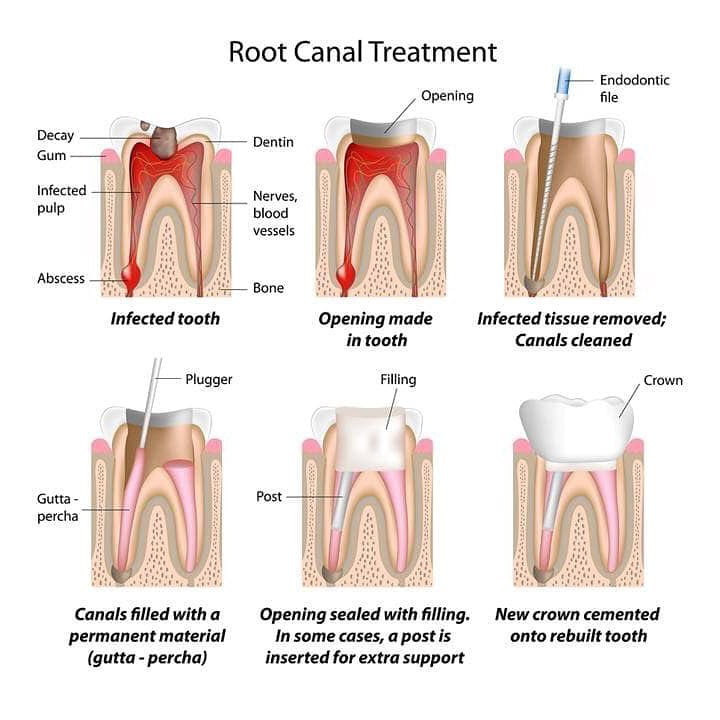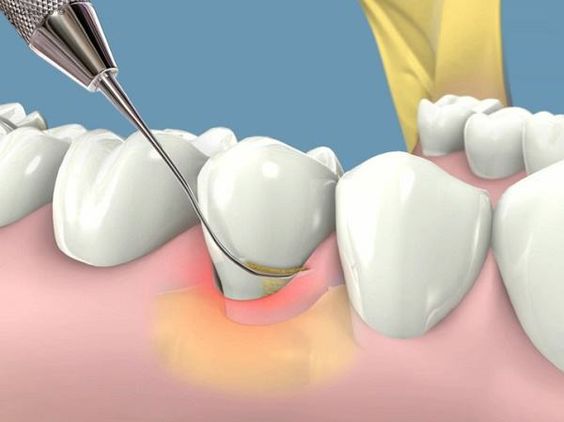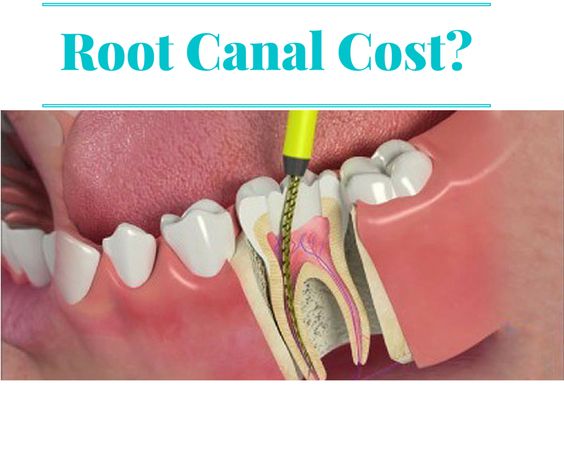Root Canal Procedure Cost, Pros & Cons & Other Details

In the past, there was no choice but to pull out the tooth when people used to get a cavity. Today, dental science has made a lot of progress. Now it is easier to save teeth from a cavity. Root canal treatment is the way to save the natural teeth. So here is all about root canal procedure cost, advantages, and disadvantages. Basically, everything you need to know about the root canal procedure cost and all.
What Is Root Canal?
Root Canal Treatment is commonly known as RCT. Root Canal Treatment is a type of dental treatment, which is done to repair infected teeth and to prevent them from getting worse. During the process of root canal treatment, the root of the tooth is removed from the nerves and the infected pulp. After this, the root of the teeth is cleaned and sealed.
The word “root canal” is associated with cleaning the canal inside the root of the tooth. If you feel pain in your tooth after eating hot and cold things, or remains for long periods of time, you have swelling and pain in your mouth, then we recommend that you should consult the dentist as soon as possible.
NOTE:
If you have a deep cavity in your tooth, you need to remove the infection and fill the gap with the help of root canal without worrying of the root canal cost.

Procedure Of Root Canal:
Root Canal Treatment is a multi-step process and usually, you need to go to the dentist more than once for your root canal to be completed. To avoid any emergencies during treatment, your dentists will find a detailed history of your current health status.
Before starting treatment it is also important that you give all the information to your dentist so that you can prevent any kind of complications during treatment.
NOTE:
This RCT or Root Canal Treatment can be done by a general dentist or by an endodontic (Dentist specializing in root canal treatment).
Step By Step Process Of Root Canal Treatment Or RCT:
The following is a phased procedure for your canal treatment:
Day 1:
Before starting the treatment process, your dentist can advise you to take an X-ray of the affected teeth.
Day 2 & 3:
To start treatment, your dentist uses anesthesia to numb your teeth.
In this entire process, your dentist uses cotton roll or rubber sheet to keep the tooth dry and keep the lips away. This helps to prevent any kind of problem due to the salvation of the canal and filling them.
To reach the pulp of the tooth, your dentist uses a device with water spray to make the path between the solid tissues of your teeth. This leaves all the damaged parts of your crown out.
Therefore, it not only helps to reach the root canal of the roots of your teeth but also prevents it from spreading in more depth.
After this step, the dentist can use a hand-held device to remove the upper part of the pulp from the crown of your teeth.
Dentists use different types of needle-like instruments, which are the sharp tools made for this process.
NOTE:
These are known as “files” and this technique is called filing.
Your dentist washes your root canal every time with water and disinfection chemicals. After cleaning and shaping, your dentist will fill the root canal with antibiotic medicines, to kill the remaining bacteria in the canal as well as prevent it from spreading until your next session arrives.
On this stage, they shut the canal for the next session by placing cotton and temporary white material soaked in an antiseptic. This temporary method is used to prevent the entry of bacteria from saliva in your canal.
Your dentist will advise you not to drink anything after one hour after going to the clinic. You may be advised not to chew anything with the treatment side for the next 24 hours.
NOTE:
Between your first and second sessions, the dentist can advise you to take some antibiotics and painkillers to reduce infection, pain and swelling.
Day 4:
At your last session, the dentist removes temporary fill, cotton and antibiotic paste from your root canal.
After cleaning them, they make a final assessment to check that there is no sign of bleeding. If so, then you will be given some medicines in this session after taking them, you may have to come for the third season for the final treatment.
Day 5:
If there is no bleeding in the root canal, then your dentist will wash the teeth and its root canal for the last time to ensure that there is no vacancy and will place canal filling cone in each root canal.
After washing, a paper tube made in the small tubes-shaped paper is used to dry the canal completely.
A paste (sealant – pasting material) which seals the root canal. After applying sealants, your dentist will fill all the root canals with filling material.
After filling, a permanent filling will be done on the crown part of your tooth.
The height of the tooth is reduced slightly so that it does not come in contact with opposite teeth.
NOTE:
The days of treatment may vary depending on the condition of the patient and also on the infection.

Root Canal Recovery:
After the root canal treatment, you recover after a few weeks. Recovery after your root canal depends on how deep your infection was initially.
A limited infection of the tooth is healed within four to six weeks. However, if the infection has spread even in the jaw, then it will usually take one year to completely recover it.
NOTE:
The process of healing in the root canal procedure can be from 6 weeks to 1 year depending on the infection.

Benefits of Root Canal Treatment:
The main benefit of the Root Canal Treatment is that it will help to get rid of the infection
With a Root canal, you can get rid of the cavity and pain
Once the Root canal procedure is completed you won’t even notice any changes and it will feel like your real tooth
Recommended Articles:-
- TOOTH IMPLANT COST, TYPES, AND PROCEDURE
- WAKE UP EARLY BENEFITS
- HEALTHCARE NEWS TODAY
- TEETH CLEANING COST, PROCEDURE, PROS & CONS
- EFFECTIVE DRY MOUTH REMEDIES
- TOOTH SENSITIVITY TO COLD
Side Effects Of Root Canal Treatment:
Root Canal Treatment usually has no side effects. However, some individuals may occasionally experience side effects or complications, which are as follows:
You may experience mild pain in the tooth for a long time. This usually occurs in cases where the infection spreads in the jawbone even before you go through the treatment.
Occasionally, the root canal bacteria are very resistant to the disinfectants used during the treatment. Therefore, they either do not die or remain inactive for a long time and resume the infection in the tooth after some time of treatment.
When the infection becomes severe, then your treatment may fail and you may have to go through the entire process again.
Due to the stoppage of blood supply, your teeth become fragile after treatment. As a result, in some cases when you cut a strong thing with teeth, your teeth may be broken or fracture may occur.
NOTE:
Regularly clean the teeth after treatment and keep checking your dentist from time to time, this can lead to the life of your teeth.

Root Canal Procedure Cost:
Here are the estimated root canal procedure costs provided below. Check out the estimated root canal procedure cost below:
- The crown in the root canal procedure cost may be up to INR 2000-8000/-
- The root canal procedure cost of capping depends on the type of material from which your crown is made and the dentist’s expertise. It usually starts from INR 1500/-
- However, compared to private hospitals and clinics, the root canal procedure cost is very low in government hospitals and clinics
Summary:
The root canal procedure cost can vary by the place you choose for treatment and the dentist’s fees. An expert or dentist specializing in root canal treatment can charge more than a normal dentist.


